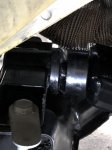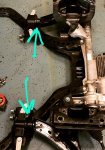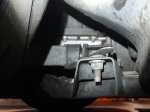- 147
- 60
A question for those of you running the BOSS 302S FLCA (M-3075-RA) with the Competition Front Bushing Kit (M-5638-C):
With no other suspension components attached to the arm, and moving the arm up and down within its range of motion, how much "bind" do you have and what do you believe is acceptable?
With no other suspension components attached to the arm, and moving the arm up and down within its range of motion, how much "bind" do you have and what do you believe is acceptable?
















